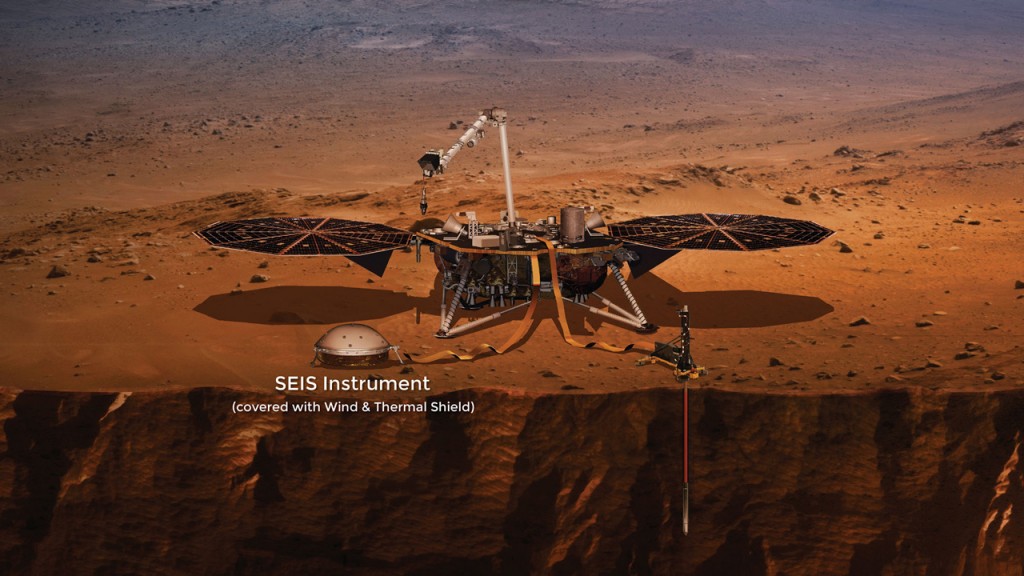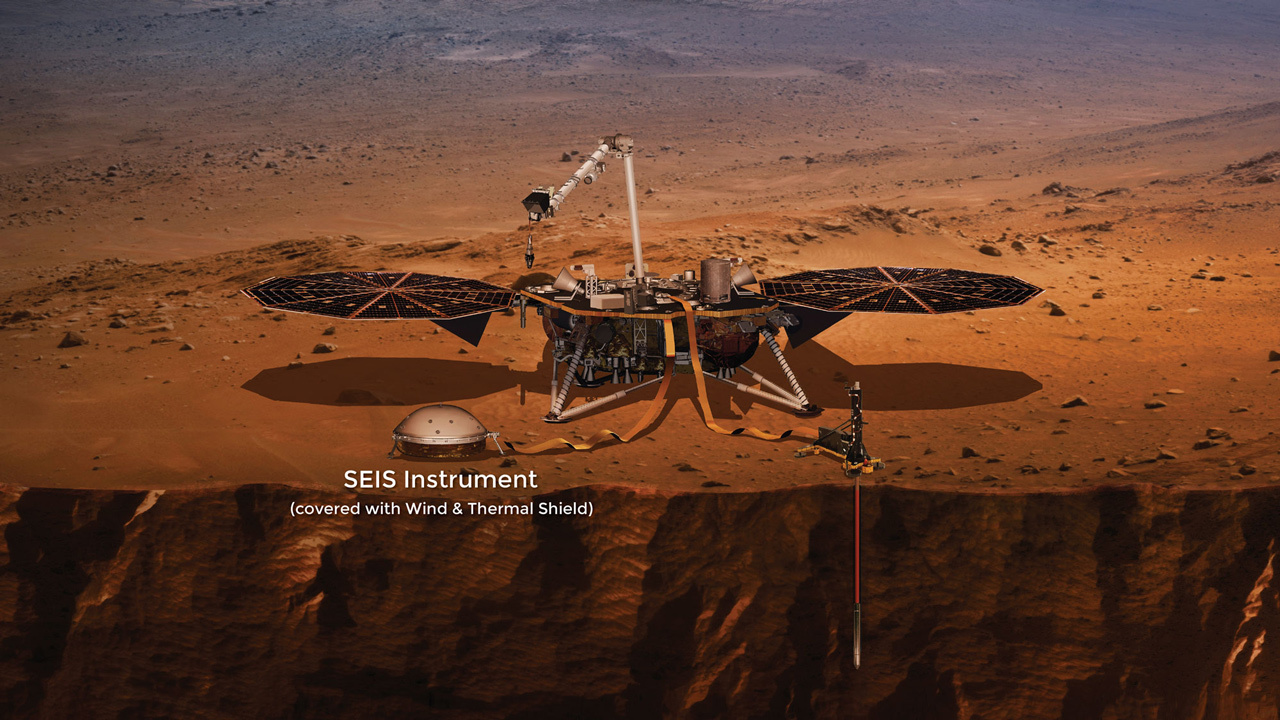Mars Interior Structure Revealed by InSight Seismic Data
Brussels, July 23, 2021 – New results from the NASA InSight mission on Mars are published today in the Science magazine, to which Attilio Rivoldini, researcher of the Royal Observatory of Belgium, contributed. Based on more than two years of data from the InSight seismometer, Seismic Experiment for Interior Structure (SEIS), and using existing geophysical models of Mars interior, the researchers were able to detect and constrain the size of its liquid core and detail the seismic structure of its upper mantle and crust. Those results significantly increase our knowledge about the present-day interior structure of Mars and provide important insights about its formation and evolution.

Artist concept of the NASA Insight lander, with the SEIS instrument highlighted in the picture. Credit: NASA/JPL
Until recently, scientists were able to study Mars interior mainly by measuring its rotation, gravity field, topography, and geology with orbiting satellites, stationary rovers, and instruments on its surface. Thanks to the SEIS instrument, placed on Mars surface in December 2018, researchers have now more than two years of seismic observations at their disposal to study the deep interior of Mars, 130 years after the first seismic recording on the Earth and 50 years after the placement of a seismometer on the Moon during the Apollo missions.
The authors of the two Science papers to which Attilio Rivoldini contributed analyzed SEIS data and have been able to detect and infer the radius of the liquid core of Mars and detail the structure of its crust.
The results show that the liquid core of Mars has a radius of about 1830 km ± 40 km. This estimate is more precise but in good agreement with previous deductions that were based on rotation and gravity data. The inferred radius implies that the iron-rich core has a relatively low density and consequently a large fraction of light elements. The fraction is significantly larger than that in Earth’s core and indicative for a fully molten core. This finding agrees with the thought early cessation of the Martian dynamo since the ongoing crystallization of an inner core would most likely have led to a substantial extension of its longevity. The large core also rules out the presence of the mineral bridgmanite in the lower mantle of Mars. Bridgmanite, the most abundant mineral in the lower mantle of the Earth, has important effects on the past and present thermal structure of a planet.
The seismic sounding of the crust below the InSight lander revealed that the crust is either 20 km thick and two-layered or 39 km thick and three-layered at that location. An extrapolating to the whole planet using topographic and gravitational data imply an average crustal thickness between 24 km and 72 km. The authors also performed geodynamical modeling based on those results and found that, if the crust is thick, the concentration of radioactive heat producing elements in the crust agrees with previous surface observations, but a larger concentration is required if the crust is thin. The amount of heat-producing elements in the crust is related to that of the whole planet and has important implications for the past and present thermal state of Mars.
Further and ongoing analysis of seismological data as well as the results of the Rotation and Interior Structure Experiment (RISE) onboard InSight will considerably increase our knowledge of the deep interior of Mars and our understanding about its formation and evolution.
References:
Stähler et al. (including Attilio Rivoldini), Seismic detection of the martian core, Science, 23 Jul 2021: Vol. 373, Issue 6553, pp. 443-448. DOI: 10.1126/science.abi7730.
Knapmeyer-Endrun et al. (including Attilio Rivoldini), Thickness and structure of the martian crust from InSight seismic data, Science, 23 Jul 2021: Vol. 373, Issue 6553, pp. 438-443. DOI: 10.1126/science.abf8966.

